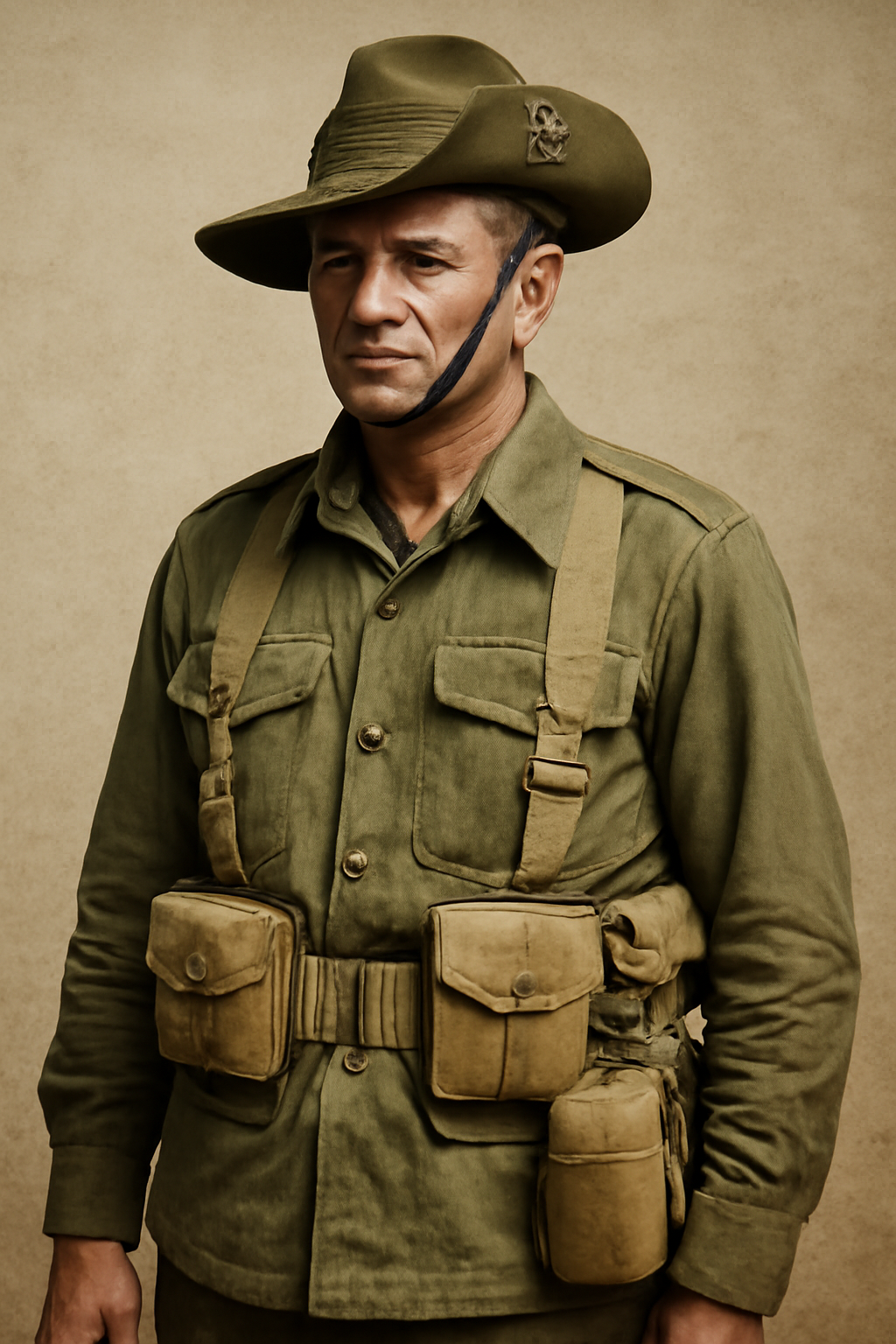
WWII Australian Military Uniforms: A Look at Design and Functionality
Published on May 30, 2025
The Evolution of the WWII Australian Uniform: History, Design, and Legacy
When we think of World War II and Australia's role in it, images of brave soldiers and rugged battlefields come to mind. But just as important as the men themselves were the uniforms they wore — the WWII Australian uniform is a symbol of resilience, practicality, and history. To truly appreciate it, we need to look back at how it evolved from the Australian uniforms of World War One and how it served soldiers in diverse and challenging environments.
Australian Uniforms: From WWI to WWII
The Australian military uniform has a rich heritage, starting from World War One. The WW1 Australian uniform was notably different in design and material compared to later versions, yet it laid the groundwork for future developments.
During World War One, Australian soldiers typically wore the classic "slouch hat" with the distinctive upturned brim, a khaki tunic, and woollen puttees wrapped around their legs. These uniforms were practical for the muddy trenches of Europe but were not designed for tropical or desert warfare.
As the world moved into WWII, Australia found itself fighting on many fronts, including the jungles of Papua New Guinea and the deserts of North Africa. This required a significant update to their military attire.
Key Features of the WWII Australian Uniform
The WWII Australian uniform reflected both the lessons learned from WWI and the unique demands of new battlefields. Let's break down some of its essential components:
- The Slouch Hat: This remained an iconic symbol throughout both world wars. In WWII, the slouch hat was often adorned with the Rising Sun badge, a proud emblem of the Australian forces.
- Jungle Green Fabric: Unlike the khaki of WWI, the WWII uniform often used a darker, more durable jungle green cotton drill fabric, better suited for tropical climates.
- The Battledress Jacket: Inspired by British military styles but adapted for Australian needs, this jacket was lighter and allowed more freedom of movement.
- Shorts and Long Trousers: Soldiers wore shorts in tropical climates to stay cool, paired with gaiters or puttees for leg protection.
- Webbing and Equipment: The 1937 Pattern webbing set was a standard issue designed to carry ammunition, water, and essential gear efficiently.
These changes were not just about appearance — they were about survival and efficiency on the battlefield.
Comparing WWII Uniform to WWI Australian Uniform
If you're familiar with the World War One soldier uniform, you'll notice that WWII uniforms were more versatile and suited to a wider range of environments. The WWI uniforms were heavier, made primarily of wool, and were less comfortable in hot and humid conditions.
In contrast, WWII uniforms used more cotton and lighter materials, and the designs incorporated pockets and features for practicality. The use of the slouch hat remained constant, maintaining continuity and tradition, while the badges and insignia evolved to reflect unit and rank distinctions.
Why the WWII Australian Uniform Matters Today
Today, WWII Australian uniforms are more than just military clothing — they are historical artifacts that tell the story of Australia's wartime experience. Collectors, reenactors, and museums treasure these uniforms for their craftsmanship and symbolic value.
Understanding the uniform also helps us honour the soldiers who wore them — men who endured harsh conditions, often in unfamiliar and difficult terrains. The design of the uniform was a vital part of their success and survival.
Tips for Collectors and Enthusiasts
If you're interested in collecting or studying WWII Australian uniforms, here are a few tips:
- Look for authentic markings such as the Rising Sun badge and unit insignia.
- Check the fabric and stitching; WWII uniforms were typically made of cotton drill.
- Be aware of reproductions, especially for hats and badges.
- Understand the context: uniforms varied depending on the theatre of war and unit.
Related Topics to Explore
For those interested in diving deeper into Australian military uniforms, exploring the Australian WWI uniform and the World War One soldier uniform provides valuable insights into how the Australian Defence Force's attire evolved.
Conclusion
The WWII Australian uniform is a testament to Australia's adaptability and resilience during a time of global conflict. From the woollen khaki of WWI to the practical jungle green fabrics of WWII, these uniforms symbolize a proud military tradition. Whether you're a history buff, a collector, or simply curious, understanding the evolution of these uniforms offers a meaningful glimpse into Australia's wartime heritage.
